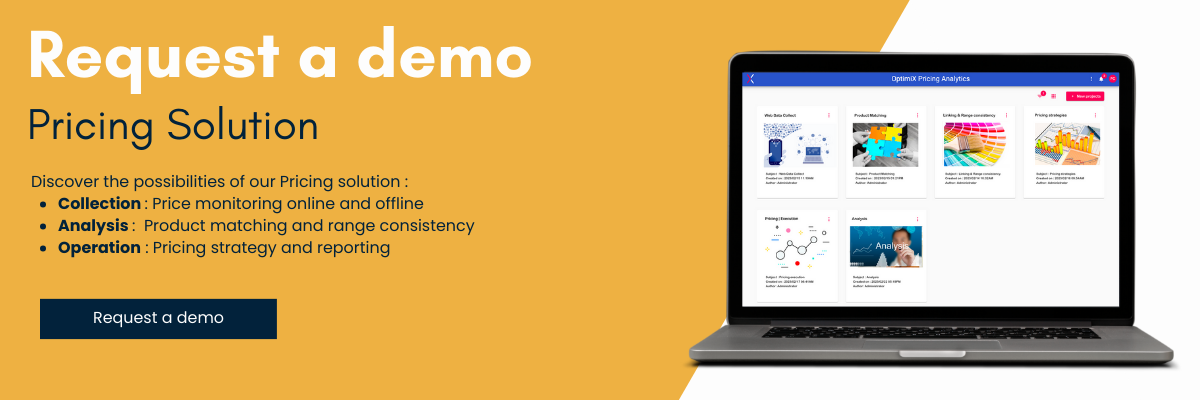Introduction
Skimming refers to a pricing approach in which a high price is set for a new product or service when it is introduced to the market.
The skimming strategy involves positioning a product at a price significantly higher than the average for comparable products, with the aim of maximizing profits. The term “skimming” has its origins in consumer selection, which occurs naturally when the price is high.
The aim is to attract consumer segments willing to pay more for the latest and/or most innovative product.
- What are the advantages of this strategy?
- How do you implement it effectively?
Skimming is based on the principle that early adopters or passionate consumers are willing to pay a premium price. What’s more, once this first wave of consumers has been satisfied, the company can gradually reduce the price. Thanks to this price reduction, it can attract a wider customer base.
In fact, this price is carefully chosen to reflect the high-end or luxury image that the company wishes to attribute to the product. In addition, this strategy focuses on maximizing margins rather than on the volume of units sold, with the aim of generating higher financial returns.

Pricing strategy & KPI monitoring
Price plays a central role in corporate strategy. It is one of the 4Ps (Product, Price, Place and Promotion) that define a company’s position in its market.
What is the "pricing policy"?
Pricing policy encompasses the decisions taken to define the cost of the products and services offered by a company.
- When determining the price, several factors must be considered, such as :
- The amount the customer is willing to pay, based on their budget, perception of value or psychology,
- The company’s desired level of profitability, based on production costs,
The skimming strategy involves setting a higher price, often above that of competitors, to target a niche of high-income consumers.
This approach is aimed not only at high profitability, but also at customers looking for luxury products or services, considered “premium” or “high-end”. What’s more, thanks to this pricing structure, we now have the opportunity to tap into international markets. becomes viable.
However, for this strategy to be effective, it is essential that the high price reflects technological innovation, superior quality or strong brand awareness. Implementing this strategy may require high initial costs.
The 8 impacts of a skimming strategy on price positioning
1. Maximizing initial profits
By setting a high price at launch, the company can achieve high profit margins. When the product is new or innovative and demand is strong. This strategy allows the company to maximize your margins from the start.
2. PREMIUM POSITIONING
A high price can establish a premium brand image. Consumers often associate higher cost with better quality or high status. The high price helps reinforce the perception of the product as high quality or exclusive.
3. Rapid recovery of R&D costs
For products that require significant investment in research and development, such as drugs or technology. When prices are skimming they can help recover these costs more quickly. This can be particularly beneficial for products that require heavy investment in R&D.
4. Less pressure on production
Sales volume is initially lower with skimming pricing. This gives the company time to ramp up in terms of production and distribution.
5. Barrier to entry for competitors
A high price can discourage competitors from entering the market. They might feel that the high-priced segment is already saturated.
6. Demand Optimization
If production capacity is limited at the beginning, the skimming strategy can help avoid too much demand that cannot be satisfied.
7. Capitalize on early buyers
Early adopters, often less price sensitive, are willing to pay a premium to get the product before others. Skimming therefore benefits from this dynamic.
8. Pricing flexibility for the future.
It is generally easier to reduce prices later than to increase them. Once the initial skimming is complete, the company can gradually lower its prices. This will allow it to attract new market segments that are more sensitive to price.

Skimming strategy and implementations
The skimming strategy, although relevant for many areas, must be adapted depending on the sector concerned.. Some sectors are more conducive to this strategy than others.
IT domain
In this sector, rapid innovations and technological advances mean that consumers are often willing to pay a high price for the latest innovations.
Consumer electronics, such as smartphones or televisions, is an area where skimming is commonly practiced.
Skimming works well here because early adopters want to have access to products before anyone else.
Pharmacy - Health Sector
New drugs, after years of research and clinical testing, may be launched with a skimming strategy. Particularly if the medicine meets an unmet medical need.
This allows pharmaceutical companies to recoup their research and development costs.
Large Retail and FMCG
In this sector, innovation is required to attract new customers. For example, a drink containing a new health-promoting ingredient could be launched at a high price.
Generally, when a new food or drink product is created and then marketed, consumers tend to buy it instinctively.
Large retailers in particular have every interest in offering innovative products that do not exist anywhere else for their customers.
3 examples of skimming strategies
1. LVMH
Louis Vuitton is an internationally recognized brand, particularly in the field of leather goods.
Louis Vuitton targets a high-end clientele concerned about their image. The brand’s high prices can be explained by exclusively French production. But also through the use of quality raw materials and expertise easily identifiable thanks to its logo.
The skimming strategy permeates every facet of the company, from product design to distribution in high-end boutiques designed by renowned architects. These boutiques are conveniently located in the most prestigious districts of major world capitals, such as the emblematic Avenue des Champs-Élysées in Paris.
2. Apple
Steve Jobs founded the Apple company in the late 1970s, which adopted a skimming strategy to market its products. This strategy starts with a high initial price for new models, then Apple gradually reduces this price over time.
When Apple launches a new iPhone, it first sets a premium price to attract fans of the brand, ready to pay more to have it as soon as it is released. Then Apple quickly reduces the price, thereby boosting demand and sales. Once it reaches a large customer base, Apple stops producing the model and removes it from the market.
Apple justifies its high prices by the costs of designing high-end products and by significant investments in research and development to create innovative models with perfect finishes. Apple’s skimming strategy has contributed greatly to its success in the technology sector.
3. Nespresso
famous brand Nespresso, market leader in coffee pods for more than 15 years, deliberately chooses a “high-end” positioning to distinguish itself from its rivals.
Nespresso runs its own stores and sells coffee machines and pods at much higher prices than competing brands like Senseo or Tassimo.
An entry-level coffee machine from Nespresso costs up to 99 euros, while Senseo offers a model for just 40 euros. Additionally, some Nespresso models, like the Gran Lattissima, can cost up to 500 euros. Nespresso justifies these higher prices by highlighting the superior quality of its machines, equipped with high-performance systems, its patented capsules and its wide variety of coffees. Signing up for the Nespresso Club offers customers benefits such as access to members-only capsules and free tasting sessions.

The consequences of a poorly controlled skimming strategy
The skimming strategy, although a source of commercial success, also has disadvantages in attracting the attention of competitors hungry for additional profits. This is why a company considering adopting this strategy must be prepared to react quickly and effectively to competitive backlash.
To achieve this, continuous market monitoring is essential, encompassing both direct and indirect competitors. Additionally, it is imperative to be ready to respond by having innovations in the pipeline.
The implications for the business
- Exclusion of certain market segments: High prices can exclude price-sensitive consumers, thereby reducing your potential customer base.
- Increased competition in the long term: Competitors may adapt by offering cheaper alternatives, which could reduce your market share.
- Negative perception risk: If customers perceive that your prices are excessive compared to the actual value, this can damage your reputation.
- Pressure to maintain quality: Customers expect higher quality at higher prices, which can put pressure on the quality of your products or services.
- Difficulty justifying prices: You will constantly have to justify why your products or services are worth the asking price.
- Reduced loyalty: Customers may be less loyal if they find cheaper alternatives or if you reduce prices.
- Barriers to entry for new competitors: Your skimming strategy can attract the attention of potential competitors, encouraging them to enter the market with competing products or services.
- Pricing Complexity: Managing price changes and discounts can be complicated and resource-intensive.
- Risk of niche dependence: If you use a skimming strategy for too long, you could restrict your growth by only catering to a specific niche.
- Sensitivity to economic fluctuations: Customers may reduce their spending during an economic downturn, which can affect your sales volume.
Conclusion
The skimming strategy is a powerful tool when used under the right conditions. It’s essential to understand your target market and be prepared to adapt quickly based on consumer reactions and competitor moves.
As with any strategy, it is crucial to evaluate it regularly to ensure that it remains relevant and effective. However, its success depends on market acceptance, the existence of real innovations or competitive advantages. It also depends on the company’s ability to adjust its strategy according to market developments.



